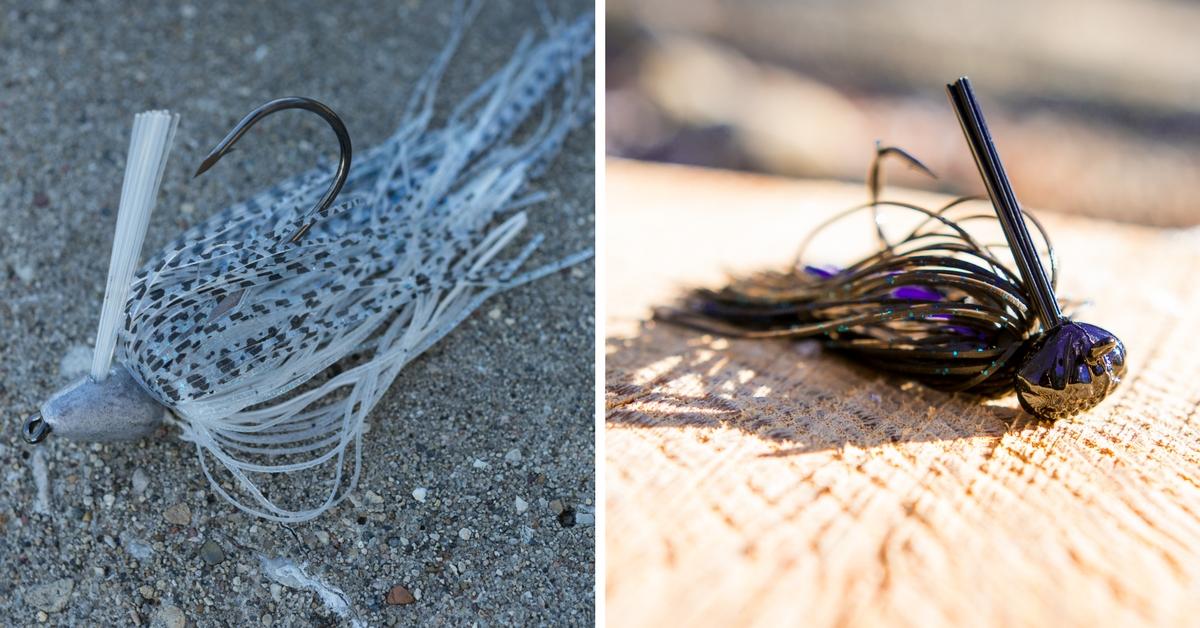Football Jig Vs. Swim Jig: When To Throw Each
Of all the types of jigs on the market, two of the most popular in recent years are the swim jig, and the football jig. Despite being lumped into the same category though (jigs), they couldn’t be more different in their applications.Here’s a breakdown of when/where/how to rig and fish a swim jig, and a football jig.
"Swimming" Types Of Jigs
Where:
Shallow areas 5-8 feet of water or less – around any available cover like grass, wood, docks, and pads. These types of jigs can also be used effectively in open water situations when bass are actively schooling.
When:
Swim jigs are effective pretty much all year in some parts of the country, as long as the water temperatures are in the upper 40’s or warmer, you can probably find a bass that will bite a swim jig.
How:
The ultimate in versatility, there are almost as many ways to fish a swim jig as there are places to throw one. Start out with long casts to cover, and slowly wind the bait back on a steady retrieve. If that doesn’t work – mix in some twitches, pauses, and shakes of the rod tip to induce strikes. Try killing the bait for a split second when you clear or bump cover. This makes the skirt flare and can be a major trigger.
"Football" Types Of Jigs
Where:
The football jig is a bottom dragging specialist, so you want to throw it in places where bass hang out on the bottom. Rocks, points, shoals, wing dams, humps, and ledges are all dynamite places to throw a football jig.
When:
Similar to swim jigs, football jigs can be effective just about all year. They really shine when bass are on offshore structure, though, so the only time they may play second fiddle is when all the bass in the lake are up shallow spawning.
How:
Make long casts past, or to, the intended structure, and free spool the bait all the way to the bottom. Once on bottom, slowly drag the bait back across the structure. If you feel a bite, make sure and really wind up – as it can be tough to bury the hook with a bunch of line out. Experiment with drag speeds, hops, twitches, or even large jumps off the bottom – at times the bass want a slightly different look.
Updated March 28th, 2018 at 2:34 PM CT


